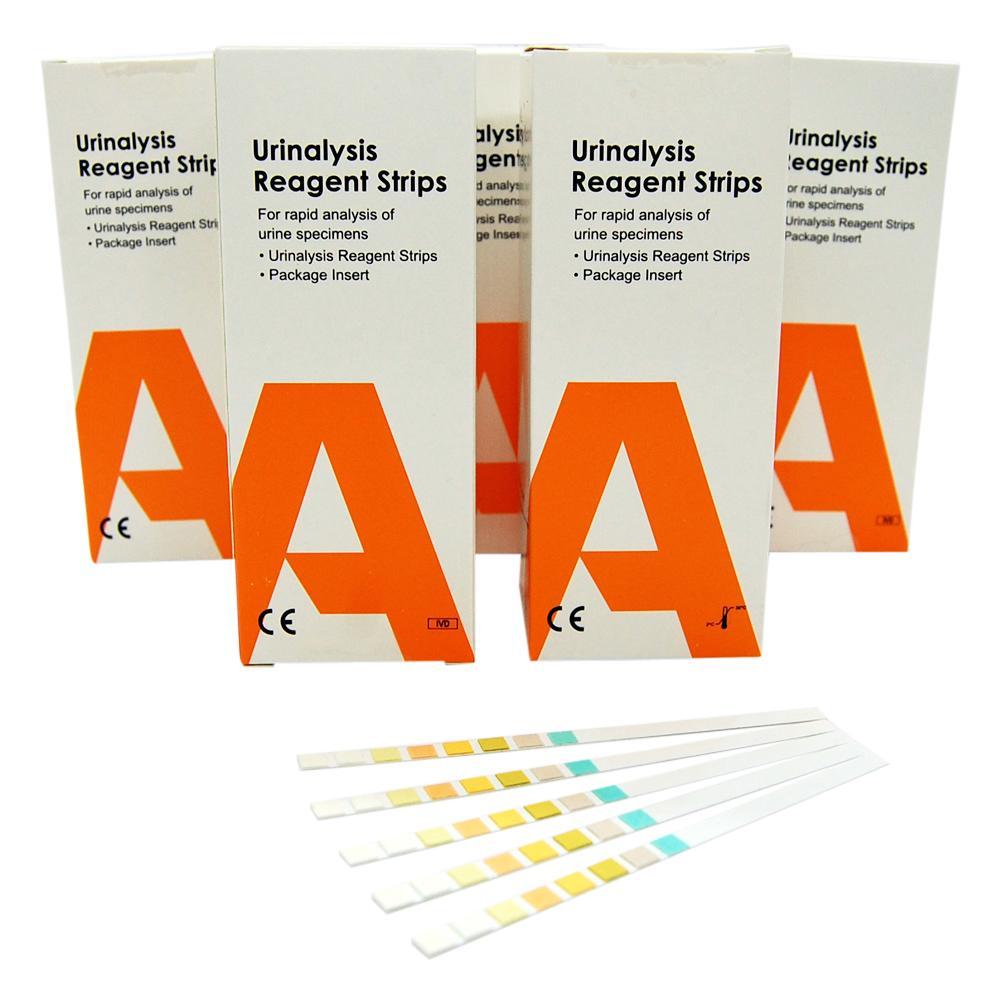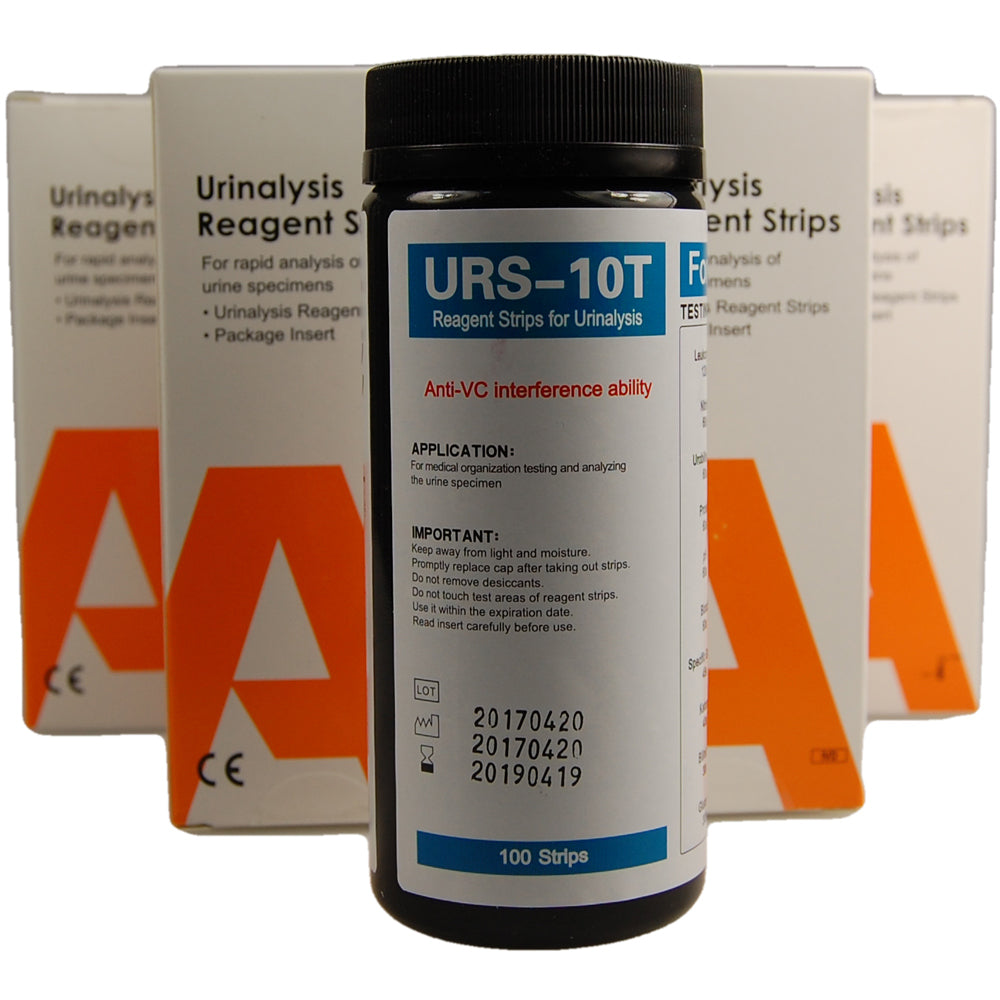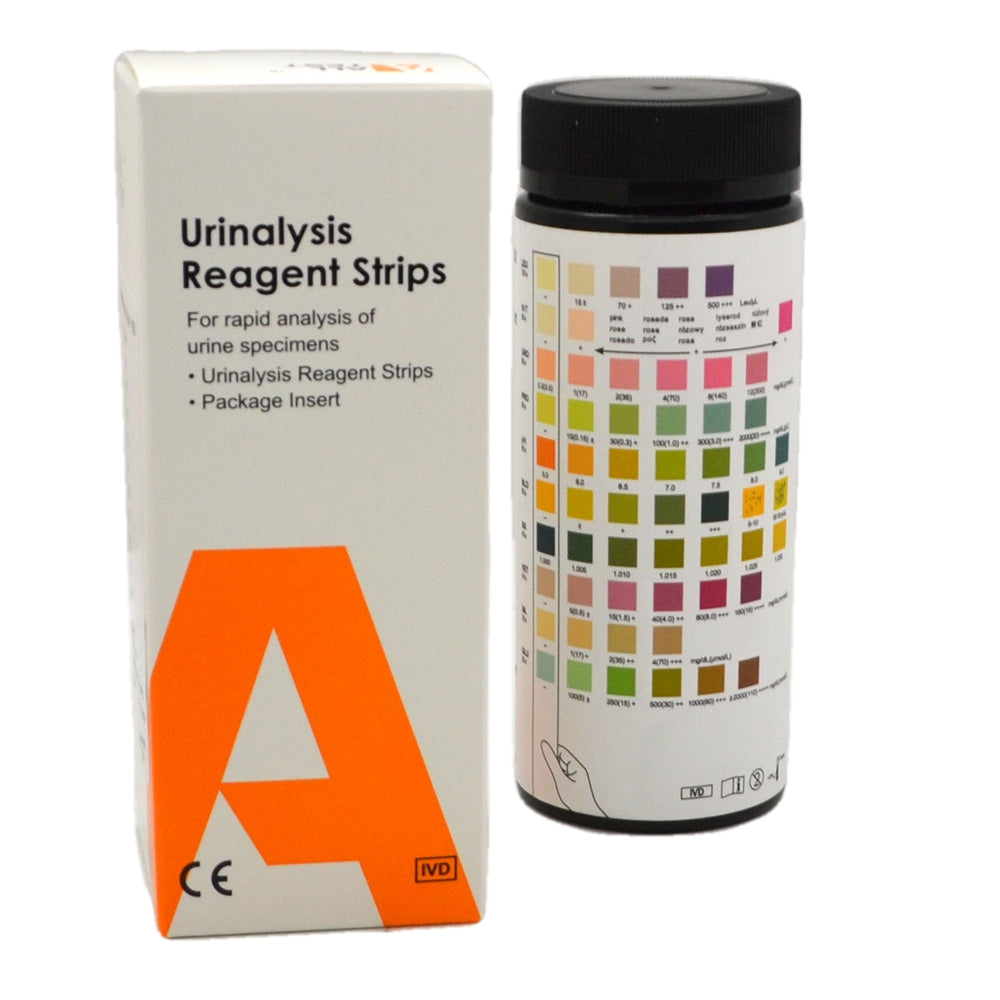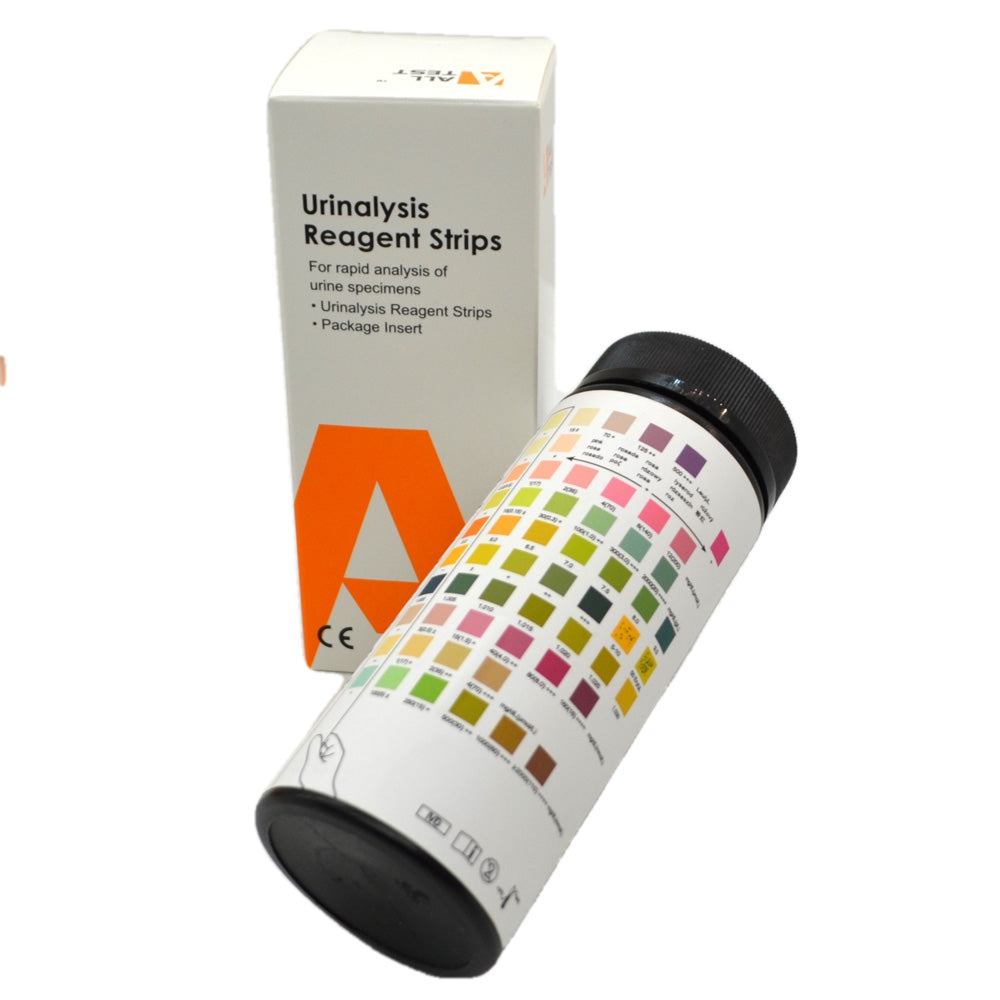Valuemed
ALLTEST 10 Parameter URS10 Urine Test Strips Pack of 100 test strips
ALLTEST 10 Parameter URS10 Urine Test Strips Pack of 100 test strips
Couldn't load pickup availability
ALLTEST 10 parameter urine testing strips
Key features of the ALLTEST URS10 urine dipstick test strips
- Simple, accurate and easy to use urine dipstick test strips in pot of 100.
- Simply dip the test strip in the urine sample, lay the strip flat and read results within minutes
- Great value 100 urine test strips per pack.
- Urine test strips for 10 parameter urinalysis ie 10 pad urine tests on each urine test strip for urine health screening.
- Ideal urine test strips for healthcare screening and disease monitoring,
- Give fast, accurate and reliable urine test results.
- Global brand urine testing strips manufactured by ALLTEST
- Boxed manufacturers pack with full instructions
- Long expiry date
- Instant results
Each urinalysis test strip tests urine for the following 10 things:
- Glucose
- Ketones
- Specific Gravity
- Blood
- pH
- Protein
- Nitrite
- Bilirubin
- Urobilinogen
- Leucocytes (white blood cells)
What are urinalysis test strips?
Urinalysis test strips are diagnostic tools that detect various substances in urine, such as leukocytes, nitrites, protein, glucose, ketones, and blood, to help identify conditions like urinary tract infections (UTIs), kidney disease, diabetes, and dehydration. They work by changing colour when dipped in urine, with results compared against a reference chart.
How to use the ALLTEST 10 parameter urine test strips

- Simple and quick to use urine dipstick human urine screening
- Simply dip the test strip in the urine sample and read the result using the colour comparison chart printed on the side of the pot
- Individual colour comparison for each parameter
- The urine strips are used to screen urine for diabetes, ketosis, and urinary tract infections including cystitis and kidney infections, kidney disease, and many other medical conditions.
- Always replace lid on the pot immediately after removing a urine test strip, to prevent the other strips in the container absorbing moisture from the air.
Contact Valuemed trade team for wholesale urine test strips in UK
Watch the video below to see how to read the results on the ALLTEST urine test strips
Share

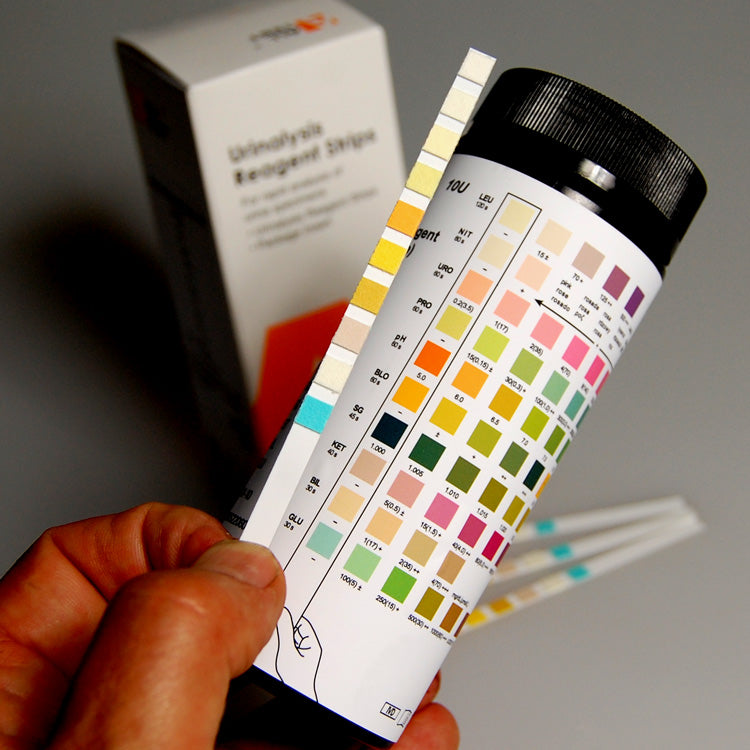

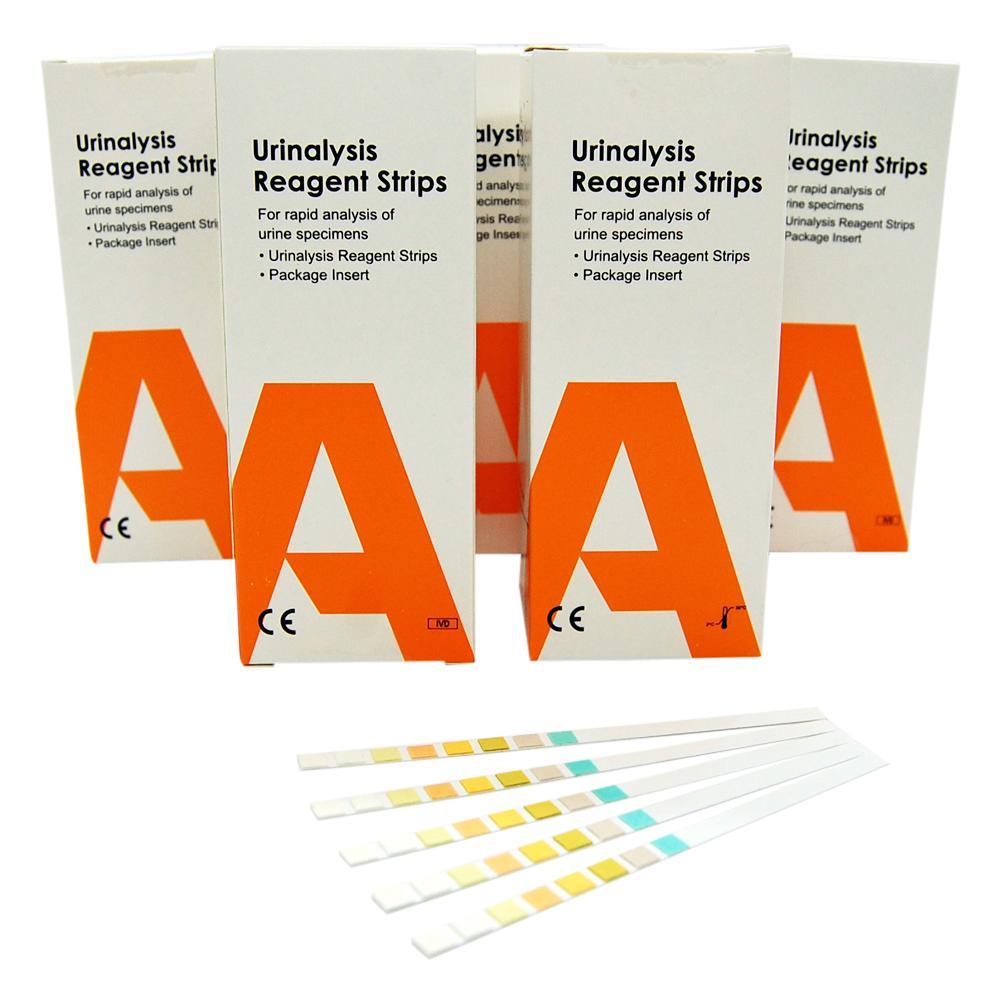

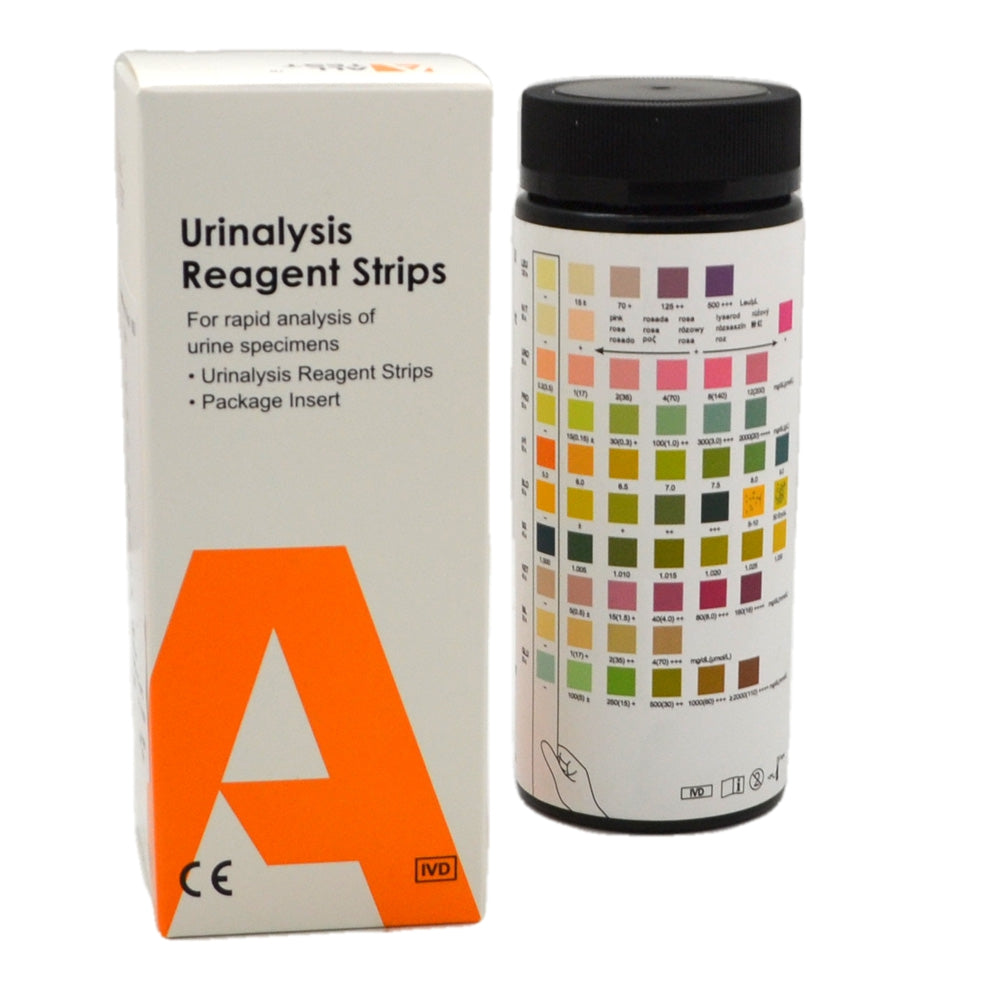



Collapsible content
Can you send me a copy of the urine test strips instructions?
All the urine test strips we supply come with a detailed set of instructions for use. If you have lost your instructions and need a copy, you can either download them from the urine test strip product, or email our customer services team and ask them to email you a copy of the instructions.
Are human and dog urine test strips the same?
While both types of urine test strips are designed to analyse urine for various parameters, they are formulated to detect specific markers relevant to either humans or dogs.
Human urine test strips typically measure markers such as glucose, ketones, pH levels, protein, blood, and specific gravity. These parameters can provide insights into various health conditions in humans.
Dog urine test strips are specifically designed to assess the health of dogs. They may measure the same markers as human urine test strips such as glucose, ketones, pH levels, protein, blood, and specific gravity as well, but the reference ranges and the interpretation of the results can vary between species.
Are all urine test strips the same?
No, not all urine test strips are the same. Urine test strips, also known as urine dipsticks or urine reagent strips (URS for short), come in various types and are designed to measure different parameters in urine. The specific parameters that a urine test strip can detect depend on its intended use and the targeted analytes.
Common parameters measured by urine test strips include:
- pH level: Indicates the acidity or alkalinity of urine.
- Protein: Detects the presence of proteins in urine.
- Glucose: Measures the level of glucose (sugar) in urine.
- Ketones: Identifies the presence of ketone bodies, which may be elevated in conditions like diabetes or ketosis.
- Blood: Detects the presence of blood in urine, which may be a sign of various conditions.
- Specific gravity: Reflects the concentration of solutes in the urine.
- Leukocytes (white blood cells): Indicates the presence of inflammation or infection.
Different brands and types of urine test strips may have variations in sensitivity, accuracy, and the specific parameters they can detect. It's crucial to use the appropriate test strip for the desired purpose, whether it's for general health monitoring, diabetes management, or identifying potential urinary tract infections and to always follow the instructions provided with the urine test strips.
Urine test strips are also available to test for pregnancy , ovulation, female hormones that indicate menopause and for drugs and alcohol.
See all urine test strips available for sale online at Valuemed
Can I buy urine test strips over the counter?
Yes, urine test strips are often available over the counter at pharmacies, chemists, drugstores, and some retail stores. These urine test strips are commonly used for various purposes, such as monitoring general health, managing certain medical conditions (like diabetes), or conducting at-home pregnancy tests. You can typically find them in the health or pharmacy section of the store.
However, the availability of specific types of urine test strips may vary. For example, if you are looking for strips designed to measure glucose levels, ketones, or other specific parameters, you may need to check for strips that cater to those particular needs. Urine test strips are also widely available to buy online.
What indicates a urine infection on a dipstick?
A urine infection, also known as a urinary tract infection (UTI), can be indicated on a urine dipstick by certain abnormalities in the results. The following parameters on a urine dipstick may suggest the presence of a UTI:
- Leukocytes (White Blood Cells): An elevated level of leukocytes in the urine may indicate inflammation or infection in the urinary tract. Leukocytes are often a key marker for the presence of infection.
- Nitrites: Some bacteria, such as Escherichia coli (E. coli), which are common culprits in UTIs, can convert nitrate to nitrite. Detection of nitrites in the urine may suggest the presence of certain bacteria associated with urinary tract infections.
- Blood: Blood on a urine dipstick can be an indication of various conditions, and while it may suggest infection, it is not specific to infection alone. The presence of blood in the urine is called hematuria, and it can be caused by a range of factors.
If you notice abnormal results in these parameters, it's important to consult with a healthcare professional for further evaluation and confirmation of a urinary tract infection. A urine dipstick provides preliminary information, but additional diagnostic tests, such as a urine culture, may be needed for a more accurate diagnosis and identification of the specific bacteria causing the infection.
It's crucial not to self-diagnose or self-treat based solely on the results of a urine dipstick. A healthcare professional can provide appropriate guidance, recommend further tests if necessary, and prescribe antibiotics or other treatments if a urinary tract infection is confirmed.
What are the causes of blood detected on a urine dipstick?
The presence of blood in urine, known as hematuria, can be detected on a urine dipstick and may be caused by various factors.
Here are some common reasons why blood might be detected on a urine dipstick:
- Urinary Tract Infection (UTI): Infections in the urinary tract, including the bladder or kidneys, can lead to inflammation and bleeding, causing blood to be present in the urine.
- Kidney stones: The presence of kidney stones can cause irritation and damage to the urinary tract, resulting in blood in the urine.
- Bladder or kidney Infections: Infections specifically affecting the bladder or kidneys can lead to hematuria.
- Trauma or injury: Physical trauma to the urinary tract, such as a recent injury or surgery, can cause bleeding.
- Inflammation of the genito or urinary tract: Conditions like cystitis, which involve inflammation of the bladder, can lead to blood in the urine.
- Prostate disease: In men, problems with the prostate can sometimes cause bleeding during urination.
- Certain medications: Some medications may cause irritation and result in blood in the urine.
- Inherited conditions: Certain inherited disorders can lead to blood in the urine.
- Menstruation: it is important to remember that in women menstruation can sometimes give a false positive for blood on a urine test strip, as the blood is not coming from the urinary tract but from menstruation.
It's important to note that the presence of blood on a urine dipstick is a preliminary indication, and further evaluation is necessary to determine the underlying cause, and rule out any serious underlying conditions. If you notice blood in your urine or if a dipstick test suggests its presence, it's crucial to consult with a healthcare professional. Additional diagnostic tests, such as a urine culture, imaging studies, or a cystoscopy, may be needed to identify the cause of hematuria and determine the appropriate course of action.
I was hoping that this brand would be reliable in tests, as I need to monitor some things. However, when the same sample was tested at the doctors' surgery the outcome was different. I will continue to use them, but am not sure I can trust them to be correct.
I love dealing with this company particularly via telephone. Being able to speak, and converse with a person is wonderful. Getting details like expiry dates is so important to me. The service is second to none.
Absolutely delighted with the quality of the strips, no leaks and no bleeds into the other parameters, the results is very close to the lab results which for me is very assuring to use with confidenc.
Great testing strips,covered everything and easy to use
Just the job , Gives a heads up to urine infections




